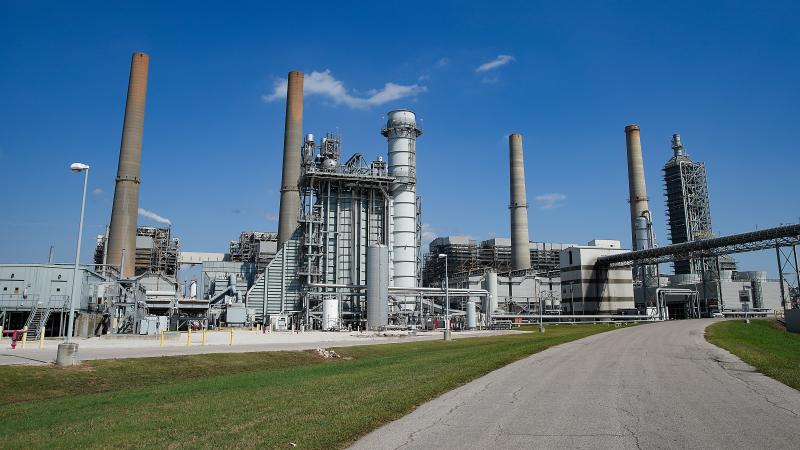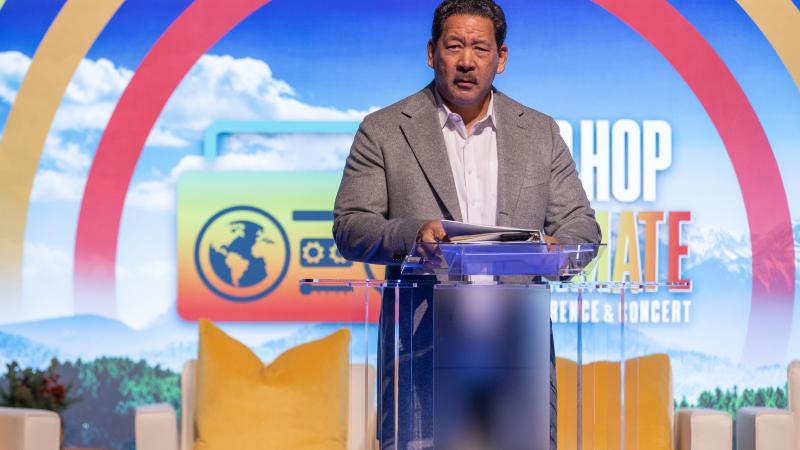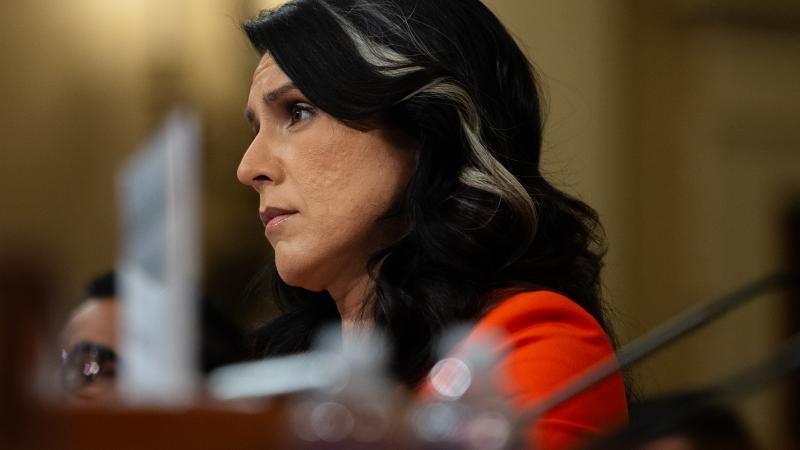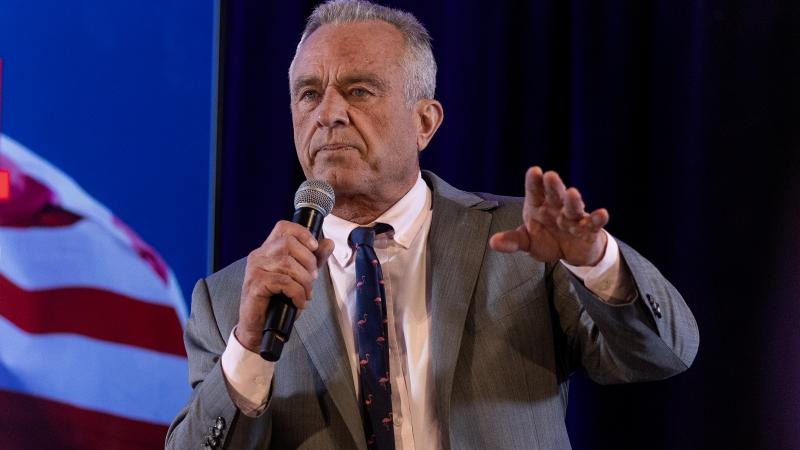Nuclear power sees renewed support, but will opponents succeed in turning public opinion again?
According to Ken Baum, senior investigative researcher for the Capital Research Center, the total annual revenue of the American anti-nuclear movement to be $2.5 billion, which was up from $2.3 billion the previous year.
Nuclear energy is seeing a resurgence as big tech companies seek electricity sources that can feed data centers requiring large amounts of reliable energy without carbon dioxide emissions.
A Pew Research poll in August found that 56% of U.S. adults favor more nuclear plants to generate electricity. However, the same poll also found that over 70% of Americans support expanding wind and solar more than nuclear.
The anti-nuclear movement remains well-funded, and it’s actively working to counter the growing support for nuclear. Will these groups, as they did in the 1970s, successfully block and reverse America’s growing appreciation of energy from fission?
Gabriella Hoffman, director of the Center for Energy and Conservation at Independent Women’s Forum, told Just the News that the opposition will be operating in a different environment now. The “legacy environmental groups,” she said, drove up fears of climate change and promised wind and solar would be the solution. As people become more aware of the problems with wind and solar, nuclear is gaining favor as the more effective solution.
“If you're looking for a clean energy source that's reliable, least land intensive, that's going to produce electricity that's reliable, almost 24/7 with a capacity factor of 93%, nuclear is the best way to go,” Hoffman said.
Double whammy
In 1977, public support for nuclear power was at an all-time high, with 69% of Americans supporting the industry. Environmental groups like Greenpeace, which still opposes nuclear energy today, were actively drumming up public opposition to the technology.
Then the nuclear industry got hit with a double whammy in the spring of 1979. First, “The China Syndrome,” was released on March 16, 1979. The movie’s plot follows the efforts of a reporter, Kimberly Wells, played by Jane Fonda, who tries to expose the coverup of an accident at a nuclear power plant, while the plant operators do everything to stop her from exposing the danger. The movie was critically acclaimed and received four academy award nominations.
Then, on March 28, 1979, the Unit 2 reactor at Three Mile Island experienced a partial meltdown due to equipment malfunctions. Although only a small amount of radiation leaked, which had no detectable health effects on plant workers or the public, the media coverage of the event came less than two weeks after “The China Syndrome” was released. After the incident at Three Mile Island, public support for nuclear energy fell to 46%.
Nuclear energy is now gaining acceptance once again, with big tech companies and the federal government getting on board with the industry’s development. Amazon announced this week it’s investing in small nuclear reactors, the Associated Press reported, which followed by an announcement from Google two days before that it would purchase energy from small modular reactors that are being developed by Kairos Power. These announcements came a month after Microsoft announced plans to buy power from Three Mile Island’s Unit One, should plans to restart the reactor come to fruition.
Stewart Brand, the founder of the "Whole Earth Catalog" and considered by some to be one of the environmental movement's forefathers, has embraced nuclear power. In a 2009 interview, Brand said "It’s not an issue in France and that’s why they have 80 percent nuclear. A bit of arithmetic I haven’t seen done yet is, if the U.S. were 80 percent nuclear, how many gigatons of carbon dioxide would not be in the atmosphere? We could have done that."
The federal government is also supporting the nuclear renaissance. The Department of Energy this week announced the opening of applications for $900 million to support the development of small modular reactors. Energy Secretary Jennifer Granholm said at an event celebrating the onlining of two reactors at Vogtle Power Plant in Georgia that reaching net zero by 2050 required the U.S. to triple its nuclear capacity in that timeframe. The Nuclear Regulatory Commission this month opened comments on a proposal to streamline the environmental review process for new reactors, Utility Dive reported.
Hit hard
The anti-nuclear movement, however, is trying to generate its own momentum. Ken Baum, senior investigative researcher for the Capital Research Center, calculated the total annual revenue of the American anti-nuclear movement to be $2.5 billion, which was up from $2.3 billion the previous year.
Anti-nuclear activists held a webinar this month, “Why Latest Nuclear Revival is Already Doomed.” The panel featured Naomi Oreskes, best-selling author of “Merchants of Doubt.” The panel’s arguments included claims that nuclear isn’t safe, it’s expensive, and that renewables are cheaper, which is based on Lazard’s levelized cost of energy. The metric excludes any cost of dealing with the intermittency of wind and solar, and has been criticized for being flawed and misleading for that reason.
Actres and activist Jane Fonda has also jumped into the fray, publishing an op-ed in The Philadelphia Inquirer. She begins the piece by saying the plans for Three Mile Island “hit me hard.”
“My heart sank as I thought back to The China Syndrome, a nuclear disaster movie I starred in with Jack Lemmon and Michael Douglas in 1979. Why, I wondered, would anyone tempt fate by reactivating a facility that suffered the worst nuclear accident in U.S. history?” Fonda wrote.
Writing on his Substack, Jason Hayes, director of energy and environmental policy at the Mackinac Center, talks about how the rhetoric of nuclear energy opponents is ramping up as Michigan Gov. Gretchen Whitmer gets federal funding to reopen the Palisades Nuclear Generating Stations.
Hayes told Just the News that opponents will have more of a challenge swaying public opinion this time around. After years of climate doom narratives, people want carbon-free energy.
“But at the same time, they also know that they have to pay their bills, and they like it when they flick a light switch and the lights come on. They like it when they turn the thermostat and the heat comes on in the winter, or the air conditioning comes on in the summer. And they're seeing the reality that wind and solar cannot power contemporary industrial society,” Hayes said.
He said that there’s always going to be people who can’t be convinced that nuclear power is a valuable energy option, no matter what.
“I think you just accept that fact and move on. But there's those who are more easily convinced or willing to accept reality — people in the middle of the curve that are paying attention,” Hayes said.
Net-zero pitfalls
Hoffman with the Independent Women’s Forum said the nuclear industry is more likely to be impeded by federal funding and net zero goals than it is by activists — or perhaps it might help them. She said tying the growth of nuclear to net-zero interests ignores the potential for nuclear to produce energy abundance.
“I feel like it would stifle nuclear’s potential, if it's only brought back because of that, and not because of private investment,” Hoffman said. Hoffman also said that a challenge to maintaining and growing nuclear support will be reaching women. The Pew survey showed that men remain far more likely than women to support nuclear energy — 70% to 44%.
Hoffman said that could change if proponents focused on how energy abundance drives down the cost of everything, including groceries and utility bills. “I think women will come around to nuclear too eventually, if they're kind of marketed in a smart way,” Hoffman said.
While the nuclear renaissance is gaining momentum, a single nuclear accident could give opponents all the ammunition they need. The reactor at Chernobyl was designed by an authoritarian communist state, and it had many flaws that aren’t incorporated into today's reactors. Neither the Three Mile Island incident nor the 2011 Fukushima accident caused any reported deaths, but the incidents loomed large in the public discussion on nuclear energy.
The industry has a solid record of safety, but no industry -- from transportation to food processing -- can meet a zero-risk threshold. Hopefully there are no mishaps. If history is any indication, it’s a safe bet opponents will exploit such an event to the fullest.
The Facts Inside Our Reporter's Notebook
Links
- Pew Research poll in August found
- still opposes nuclear energy today
- The China Syndrome
- critically acclaimed
- four academy award nominations
- no detectable health effects
- fell to 46%
- Associated Press reported
- Kairos Power
- In a 2009 interview
- plans to buy power
- announced the opening of applications
- triple its nuclear capacity
- Utility Dive reported
- Capital Research Center
- American anti-nuclear movement to be $2.5 billion
- Why Latest Nuclear Revival is Already Doomed
- levelized cost of energy
- known for being flawed and misleading
- publishing an op-ed in The Philadelphia Inquirer
- The China Syndrome
- Substack
- Mackinac Center
- gets federal funding
- it had many flaws
- The reactor at Chernobyl















